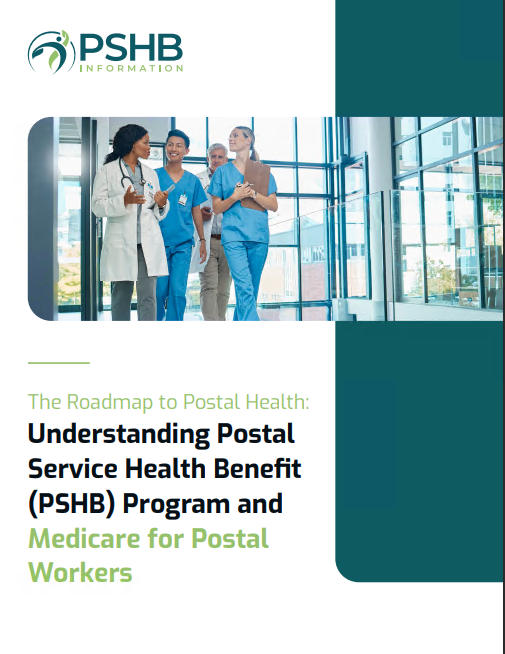Key Takeaways
-
Even small copayments under the Postal Service Health Benefits (PSHB) Program can add up over time, impacting your overall healthcare costs.
-
Understanding how PSHB copayments work can help you make informed decisions about your medical expenses and budget accordingly.
What Are PSHB Copayments, and Why Do They Matter?
When you visit a doctor, pick up a prescription, or receive medical treatment, you often pay a small amount upfront—this is called a copayment (or copay). Under the PSHB Program, copayments are a standard part of your healthcare costs, helping to share the expenses between you and your insurance provider.
While they may seem minor at first, these payments can accumulate quickly, especially if you frequently visit specialists, require regular prescriptions, or need emergency medical care. Understanding how they work within PSHB can help you stay ahead of potential expenses.
Breaking Down PSHB Copayments by Service Type
Primary Care Visits: Your Routine Health Checkups
Your primary care provider (PCP) is your go-to for general health concerns, preventive screenings, and chronic condition management. PSHB plans typically require a copayment for each visit. While a single visit may not seem expensive, regular checkups, follow-ups, and consultations can increase your out-of-pocket costs over time.
Specialist Visits: Higher Copays for Expertise
If you need to see a specialist—such as a cardiologist, dermatologist, or orthopedic doctor—you’ll likely face a higher copayment than you would for a regular PCP visit. Specialist visits often require referrals, and because these doctors provide more focused expertise, the cost-sharing aspect of your PSHB plan reflects this.
Urgent Care vs. Emergency Room: Where You Go Matters
Sometimes, you need immediate medical attention, but choosing between urgent care and the emergency room (ER) can significantly affect your costs. Urgent care visits typically have lower copayments compared to ER visits, making them a more budget-friendly option for non-life-threatening issues. On the other hand, ER visits come with higher copayments due to the intensive resources used in emergency care.
Prescription Medications: Tiered Copayments Explained
PSHB plans generally categorize prescription drugs into different tiers:
-
Generic Drugs – These have the lowest copayments and are cost-effective alternatives to brand-name medications.
-
Preferred Brand-Name Drugs – These are more expensive than generics, with moderate copayments.
-
Non-Preferred Brand-Name Drugs – These carry higher copayments, as they are costlier for insurers to cover.
-
Specialty Drugs – Used for complex conditions, these often come with the highest copayments.
If you take multiple medications, understanding these tiers can help you save money by choosing lower-cost options whenever possible.
Hospital Stays and Surgeries: Higher Out-of-Pocket Costs
Inpatient hospital stays and surgical procedures can result in substantial expenses, even with PSHB coverage. Copayments for hospital admissions or outpatient surgeries are typically much higher than routine office visits. These costs may be fixed or percentage-based, depending on your specific plan.
How to Manage and Reduce Your Copayment Expenses
Take Advantage of Preventive Services
Many PSHB plans cover preventive screenings, vaccines, and annual wellness visits at no additional cost to you. By using these services, you can avoid larger medical expenses down the road.
Compare Urgent Care vs. ER Costs Before Seeking Treatment
If you have a non-life-threatening condition, opting for urgent care instead of an ER visit can save you a significant amount on copayments. Knowing the nearest urgent care facilities within your PSHB network can be a smart financial move.
Use Generic Medications When Possible
Since generic medications have lower copayments, requesting generics instead of brand-name drugs can help you cut down on prescription costs. Ask your doctor or pharmacist if there’s a suitable generic alternative for your prescribed medication.
Keep Track of Your Medical Expenses
Small copayments can add up faster than you realize. Keeping a record of your doctor visits, prescriptions, and other medical expenses will help you stay on top of your healthcare spending and identify areas where you can cut costs.
Check Your PSHB Plan’s Out-of-Pocket Maximum
Every PSHB plan has an annual out-of-pocket maximum—a cap on the total amount you’ll pay in copayments and other cost-sharing expenses for covered services. Once you reach this limit, your plan covers 100% of additional costs for the rest of the year. Knowing your plan’s threshold can help you plan for major medical expenses.
Copayments and Your Overall Healthcare Budget
Why Budgeting for Copayments is Important
Since copayments are a recurring expense, factoring them into your monthly budget is crucial. If you have ongoing medical needs, estimating your expected copayments can prevent financial strain and ensure you always have enough set aside for healthcare.
Using a Health Savings Account (HSA) or Flexible Spending Account (FSA)
If your PSHB plan is compatible with an HSA or FSA, you can use these tax-advantaged accounts to cover copayments. These accounts allow you to set aside pre-tax dollars for medical expenses, reducing your overall healthcare costs.
What Happens if You Don’t Pay Copayments?
Neglecting to pay your copayments can lead to billing issues and even potential disruptions in care. Medical providers may send unpaid balances to collections, affecting your credit score. Always review your billing statements to ensure that all copayments are paid on time.
Making the Most of Your PSHB Plan
Review Your Plan Annually
PSHB plans can change yearly, including adjustments to copayment amounts. Reviewing your plan during Open Season ensures that you’re on the best plan for your healthcare needs and budget.
Know When to Call Your Insurer
If you have questions about your copayments, coverage, or medical bills, don’t hesitate to contact your PSHB insurer. They can provide detailed explanations about cost-sharing and help you navigate any unexpected expenses.
Keep an Eye on Healthcare Policy Changes
Healthcare policies and regulations can impact copayments, out-of-pocket costs, and plan benefits. Staying informed about any changes to the PSHB program can help you anticipate potential shifts in your healthcare expenses.
Managing PSHB Copayments for a Healthier Future
Understanding how PSHB copayments function empowers you to make better healthcare choices while managing costs effectively. By keeping track of your medical expenses, utilizing preventive care, and choosing cost-effective treatment options, you can ensure that your healthcare budget remains manageable.
For more details on your specific PSHB plan options and to find a licensed agent listed on this website, get in touch today to explore the best choices for your healthcare needs.






